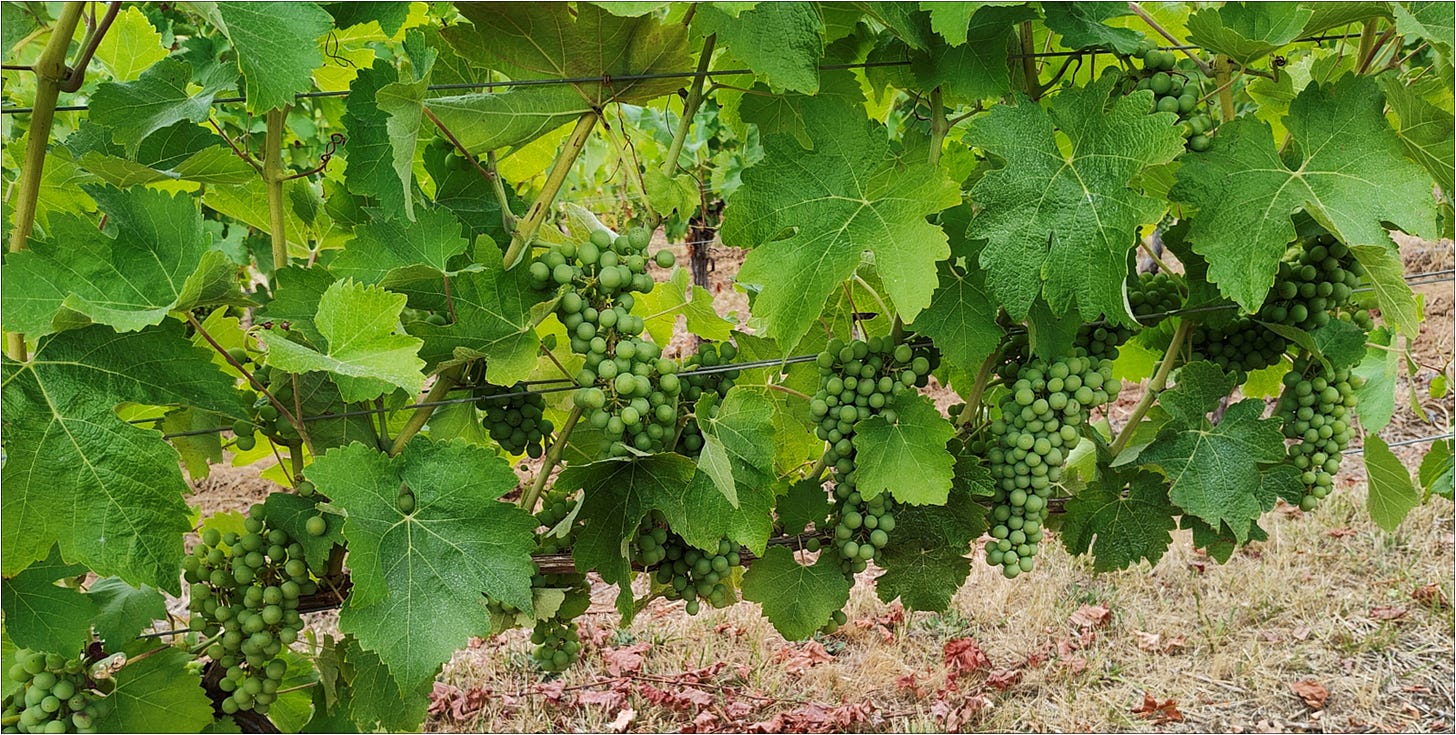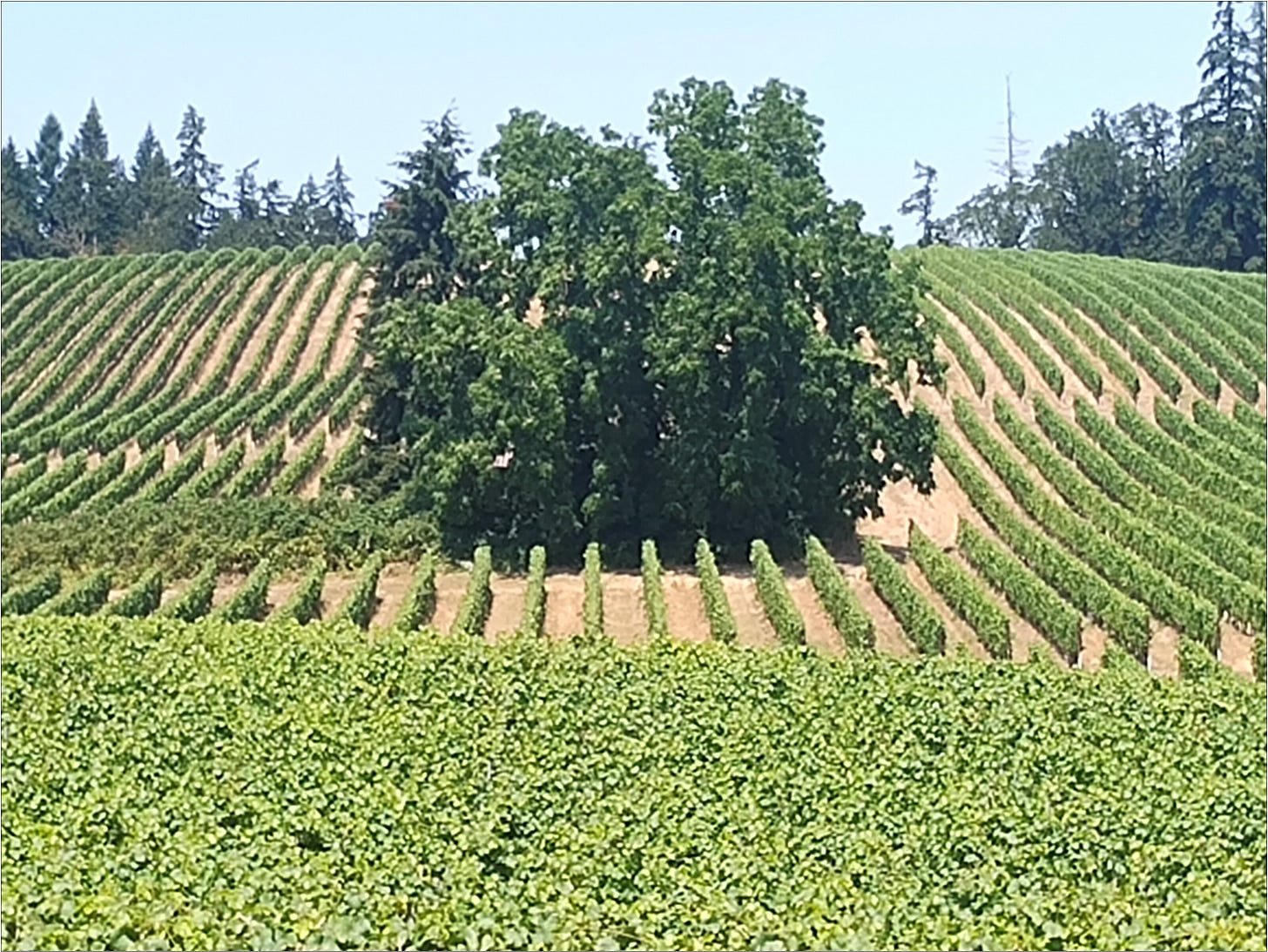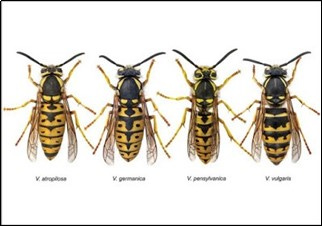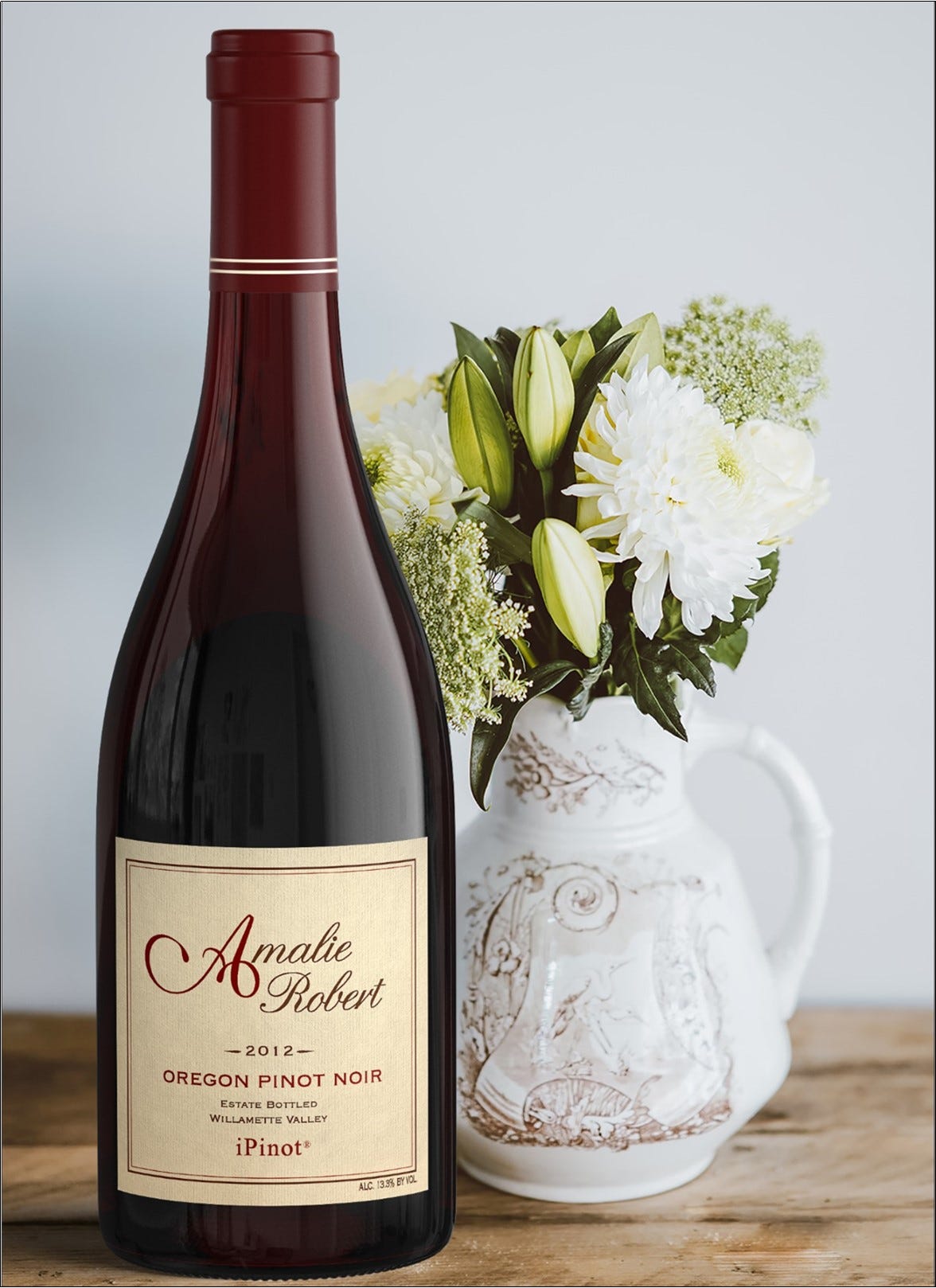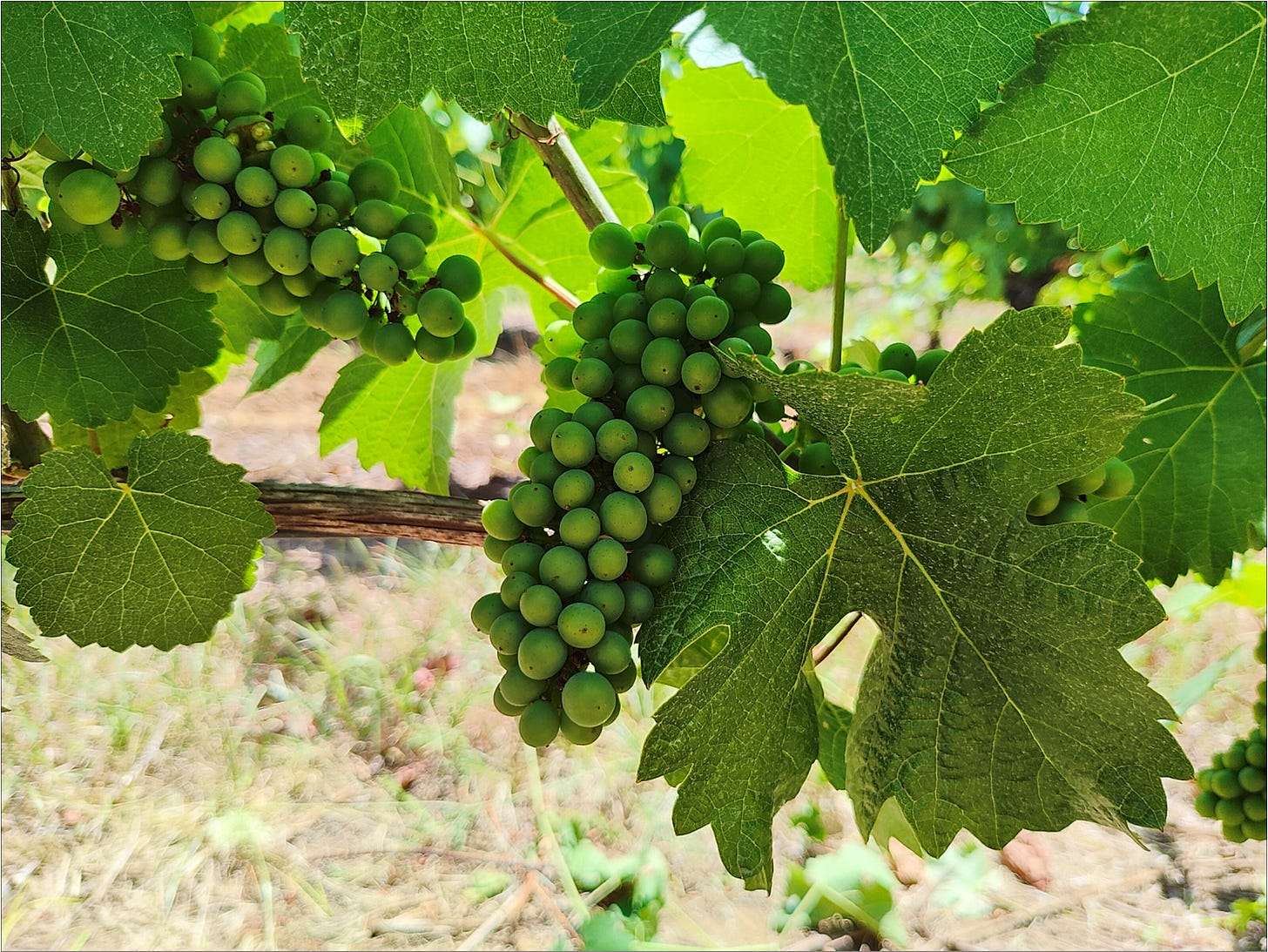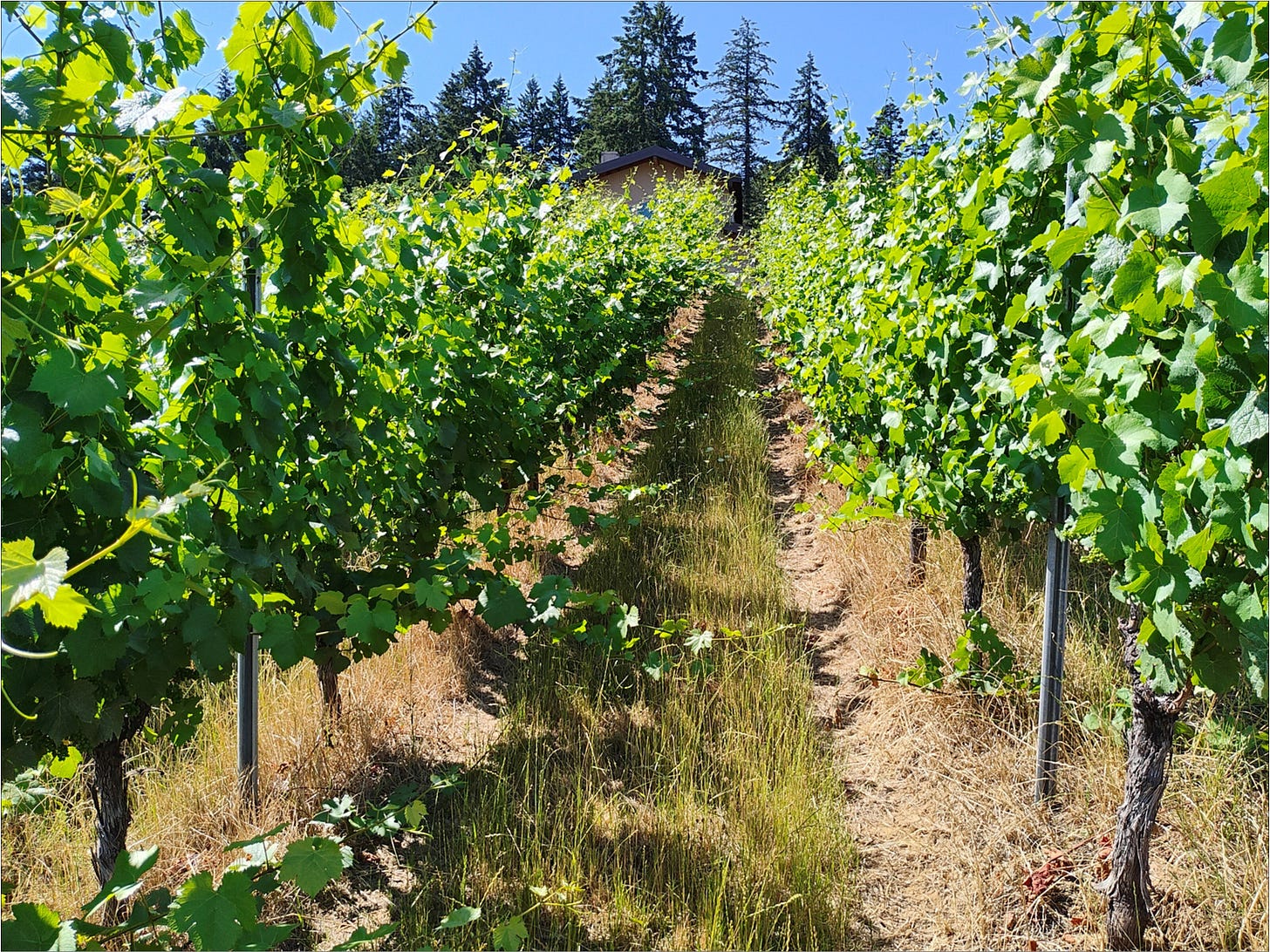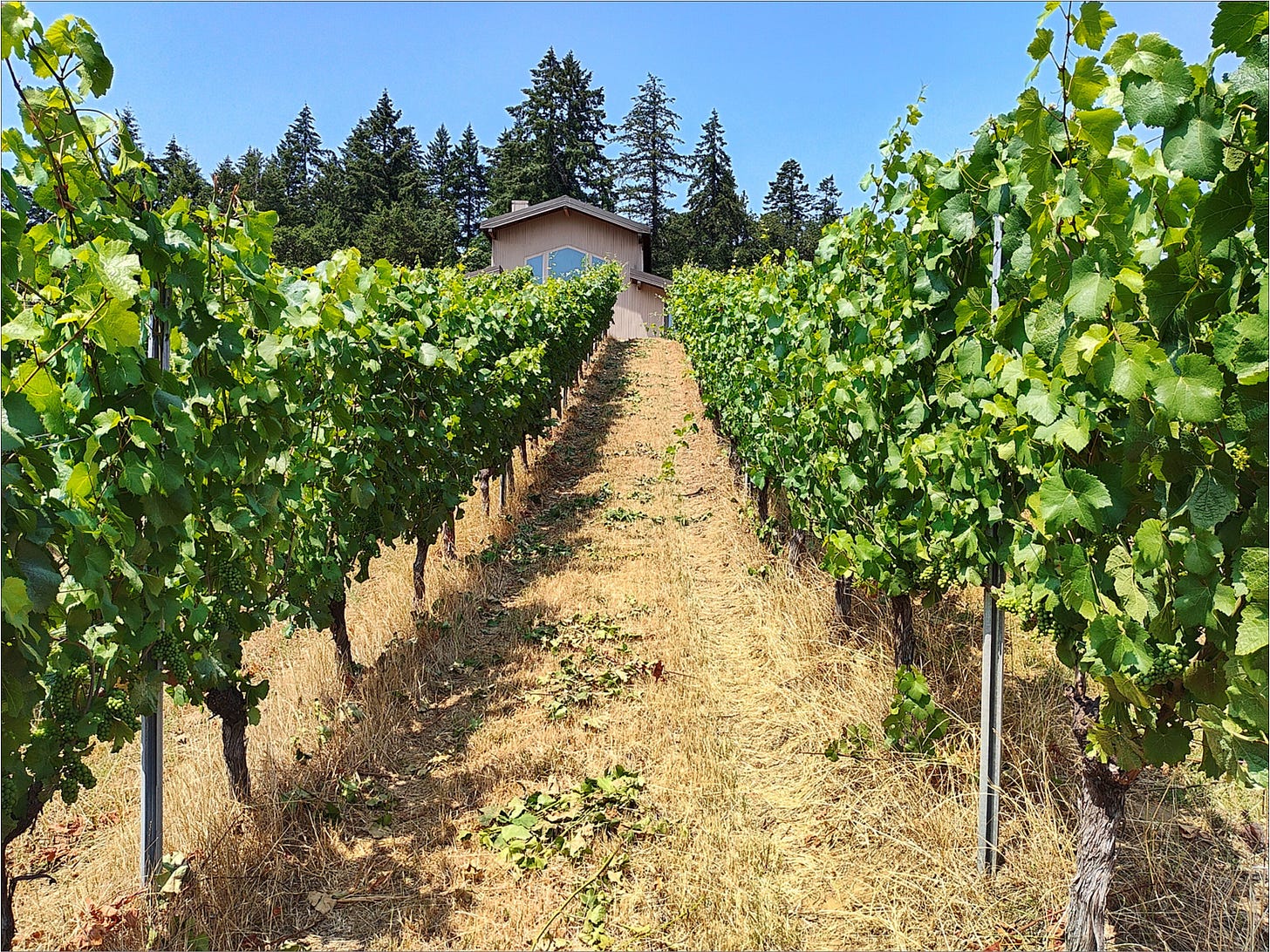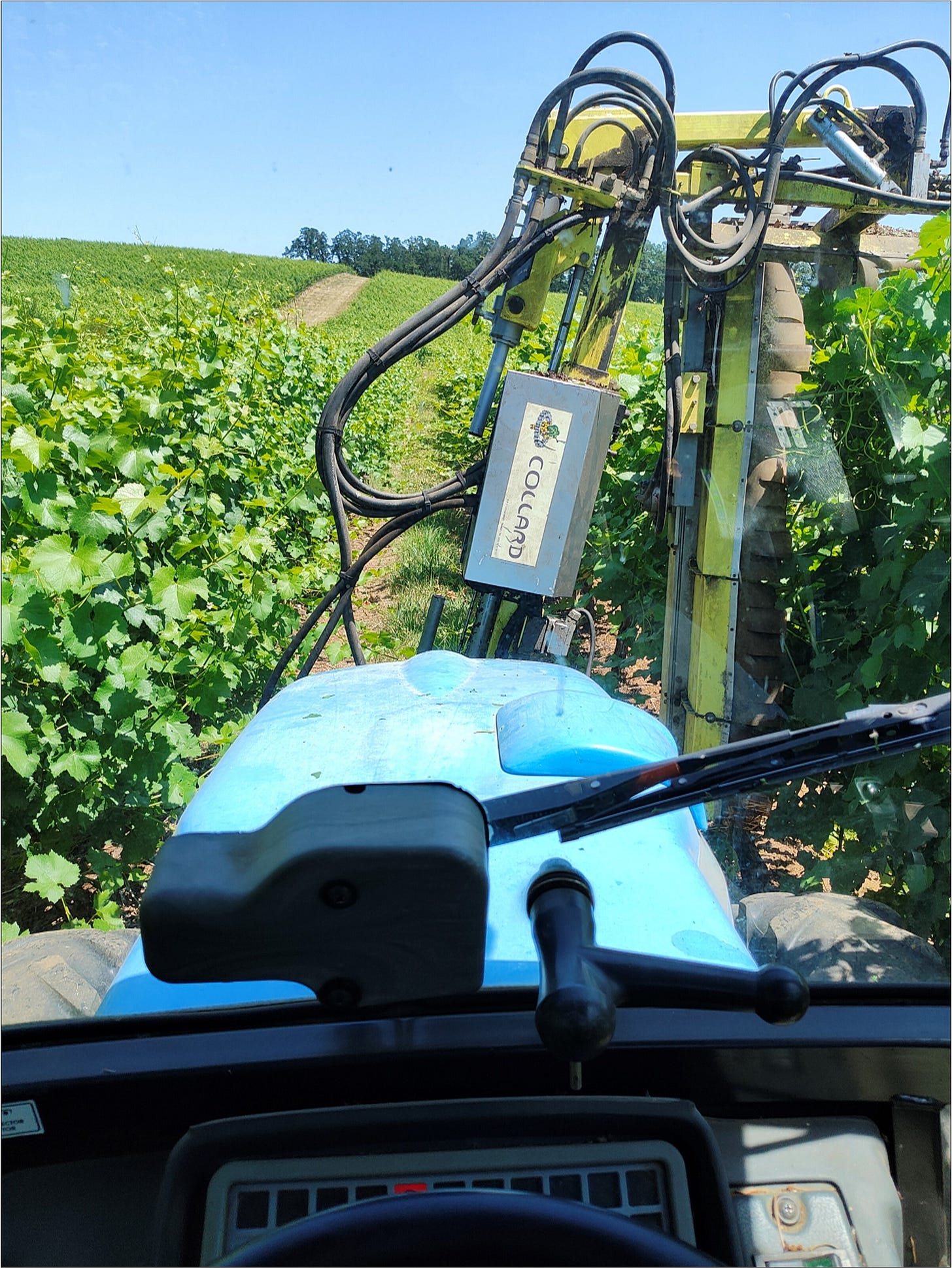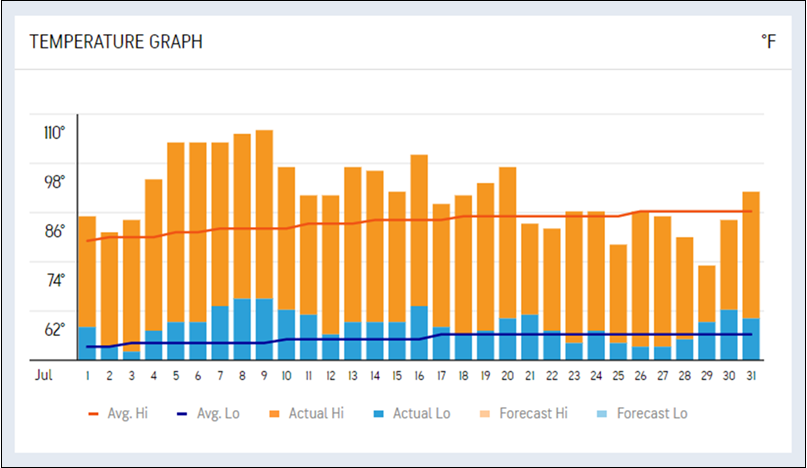Amalie Robert Estate Climate Update: July 2024
Hello and Welcome,
This is the July Climate Update from Amalie Robert Estate, Vintage 2024. As you can clearly see, the Pinot Noir clusters are nicely bedangled along the vine. But they are not quite ready to show their true colors. That’s ok, we still have plenty of things to get done before we have to get ‘er done. The GREAT CLUSTER PLUCK, that is!
While the weather is unique to each vintage in the Willamette Valley, it looks like we are in for a moderate ripening period. Obviously, we would never actually say that out loud, lest Mother Nature rains on our parade. But a moderate August before a mild September leading into a cool October could happen. It could even happen in the Willamette Valley. What are the chances? Could be one in a million, but if it happens to you, it happens 100%.
In This Communication:
The Big Picture
Winemaking: The Continuation of Terroir by Other Means.®
The Main Story: July Brings the Heat
What is it Like to be a Vine?
The Human Factor
Turning the Corner
What Does This Mean and Why Should I Care?
The Numbers: Fun With Facts!
Fire Watch: The Pacific Northwest
Other Resources
The Big Picture
We don’t know how old this Walnut Tree is, or how it got started. But what we do know is that when its leaves begin to yellow in the fall, it is time to harvest our wine. Until then, it provides a handsome persona to our vineyard site. It’s just as green as the day is long, until it’s time to harvest our wine.
It also provides a nice perch for our vigilant raptors who are providing overwatch from those pesky robins and starlings. They aren’t here yet, but they are a comin’ to get their share of the harvest. Or be harvested trying.
And there will be yellow jackets, those so called “social wasps”. They like to interact with you in your environment. Best to give them a wide berth and put out a few dozen traps. We will have more on that next month when we deep dive into yellow jacket warfare (which is legal in all 50 states). In the meantime, you can familiarize yourself with the 4 most common species you are likely to encounter or be encountered upon.
iPinot® Pinot Noir 6-Pack Digital Offer
iPinot® Pinot Noir - a reserve level wine without the reserve level price. iPinot® Pinot Noir is created from reserve quality barrels of wine selected for our “Hers and His Reserves” - Amalie’s Cuvée and Estate Selection Pinot Noirs. Once the final “Hers and His Reserve” wines are blended, we have a few reserve level barrels of wine left to blend. We blend these cellar worthy barrels of wine together to create iPinot® Pinot Noir - a reserve level wine without the reserve level price.
Experience cellar worthy, Willamette Valley iPinot® Pinot Noir by Amalie Robert Estate. We are offering select vintages of iPinot® Pinot Noir for our 6-Pack Digital Offer!
Winemaking: The Continuation of Terroir by Other Means.®
We are living the dream so you don’t have to. Winemaking: The Continuation of Terroir by Other Means.® is a repository of our farming history at Amalie Robert Estate.
We have over 200 posts going back some 20 years. It’s all out there on Substack. You can visit the archive for FREE! If you want to see what we see on a more regular basis, follow us on Instagram @AmalieRobert.
Planning to enjoy traveling again and exploring the Willamette Valley? There are two primary gateways to the Willamette Valley. Most people are familiar with Portland International airport (PDX) at the top of the Willamette Valley. However, there is a second gateway in Eugene (EUG) at the south end of the Willamette Valley. Both of these airports service the major carriers.
Insider Tip: Alaska Airlines offers a Wine Flies Free program from both PDX and EUG. You will need to acquire a wine shipper box as you tour the valley. When you check in for your flight, indicate you have a case of wine, and it will be checked for FREE on Alaska Airlines. BONUS: Many wineries will provide you a FREE wine shipper box with a 6 bottle purchase.
Interested in learning about the newest AVA? Download our FREE guide to the Willamette Valley AVA’s!
Amalie Robert Estate is open year round by appointment for vineyard tours and tastings. Request a tasting appointment with your preferred day and time.
If your plans have you somewhere other than the Willamette Valley, the Big Blue Button can co-locate your wines with YOU to enjoy Labor Day weekend!
We suggest a UPS or FedEx drop point to allow you to pick up your wine at your leisure. It's better on the A-List. A-List members receive a 10% discount on any 1-11 bottle purchase, a 20% discount on a 12-bottle case purchase, and domestic ground shipping is always included with a case. Please email Dena for shipping options to Alaska and Hawaii.
The Main Story: July Brings the Heat
Things were going pretty well in the vineyard as we ended June. The first wires were up and the Pinot Noir shoots were neatly tucked and clipped into them. The first week of July put an end to all of that with a record setting heat dome.
This wasn’t our first Dog Show. We have seen heat before. In fact, our personal best was July 2020 when we topped out at 118 degrees. But this event was quite different in how it impacted not only the vines, but the humans that tend to them.
What is it Like to be a Vine?
The vines have also experienced these growing conditions. If you happen to be an irrigated Zinfandel vine in southern California, 100 degrees is par for the course. But a Pinot Noir vine on a sloped Willamette Valley hillside without irrigation is a whole different world.
Vine age and grafted vine rootstock choice determines quite a bit about how the vine responds to heat and the resulting wine made from the fruit. Typically, the older the vine, the deeper the roots are in the soil horizons. Our Bellpine series soil has a Cr horizon at about 26 inches. Once the vines penetrate that stratum, they are probing the clay soil for moisture.
Rootstock choice determines how deep the vine roots will grow. Differing rootstocks have different rooting depths. Often times rootstock choices are made to advance ripening, meaning the fruit is ready to harvest before own-rooted (non-grafted) vines would be ready. And more importantly, before the weather closes your harvest window due to rain and resulting rot. Generally speaking, the shallower the effecting rooting depth of the rootstock, the earlier the harvest window is. This is because the rootzone is depleted of available soil moisture, forcing the vine to ripen its seeds. And in so doing, the wine berry itself.
That brings us to the Grand Champion of rootstocks, commonly known as 5C. This rootstock has one of the deepest rooting proclivities of any rootstock. Its growth habit imparted to the vines most closely resembles own-rooted vines. And as dry farmers, we grow quite a bit of wine on 5C rootstock.
Vines respond to heat by transpiring water on the back side of their leaves. The release of moisture through stomates provides vapor that cools the leaf, allowing it to carry on photosynthesis. This only happens if the roots are deep enough in a soil stratum that has available soil moisture. The next step is to take water from the wine berry.
The fruit is the main concern from a wine point of view. The vine can translocate moisture from the fruit if the roots are in a depleted stratum. If this happens late in the season, the fruit will raisin, resulting in high alcohol potential (or sweet wine due to unfermented sugar) and prune like flavors. More of a Port type flavor than Pinot Noir.
Along with the July heat dome came blazing sunshine. If you have ever seen a fair skinned person with a severe sunburn, then you have seen what can happen to exposed fruit in a vineyard setting.
Timing of leaf removal is key in avoiding sunburned fruit. Winegrowers typically remove leaves from the vine that shade the fruit from the morning sun. The amount of leaf removal varies, but the reason stays the same. This is done to discourage rot due to moisture from the morning dew. The early morning sunshine will dry the fruit as it basks in the luxury of an easy Willamette Valley morning.
If excessive leaf removal occurred just prior to a major heat event, it is quite possible the fruit would sunburn as it had not yet acclimated to receiving more direct sun. The later in the season, the more impact sunburn will have on the wine. Kind of like getting a nice tan at the beach, a little more exposure each day over several days is better than full immersion treatment for several hours the first day.
The Human Factor
The vines are always trying to outgrow the trellis wires and excessive heat just encourages that behavior. The July heat dome came as we were attempting to harness all of this vine growth in our second set of catch wires, and then third. We got it done, eventually, but not the way we would have preferred.
Safety is a key concern in the agrarian endeavor. Ernie is more cautious than ever with his aging Italian tractors. You just never know what could happen, but you are pretty sure that something is going to happen – to you. You are on high alert with the knowledge that those tractors will not float if they roll downhill into the pond.
And field labor is a fragile entanglement. Field workers are offering labor each day. Like most rational people, they want to maximize the amount of work they offer every day. We start early in the morning while the temperatures are lower, typically 5:30 am. Extra breaks, shade and an uninterrupted supply of water are always ready and available. But when the temperature rises above 90, we have to call it a day. A key concept in sustainability is being able to sustain your activity.
And so, what should have taken a week, took three weeks. The vines didn’t mind, they just kept growing longer and longer and longer each day. That made the task of tucking them in the trellis wires that much more difficult for our field workers. The longer it takes, the longer it takes.
Turning the Corner
But once the wires are up and clipped into place, the hedging can begin. Hedging is our way of telling the vines they need to stop growing out these shoots and start to ripen their seeds. And in so doing, develop aroma, flavor and texture for the wine.
In the old days, they would just release goats to nibble off the shoot tips. This sends a signal to the vine that the shoot tip is gone. The vine responds by releasing all of the dormant lateral shoots along the cane. Thus, you have 15 new shoot tips to hedge off on each cane. You are going to need more goats…
The first pass of the hedger takes off the shoot tips from the longest shoots. The vine gets the message and sends out the next set of shoot tips. Ernie waits a couple weeks for them to grow out of the trellis wires into the Hedge Zone. Then he makes a second, loving pass.
At this juncture, the vine gets the point. The seeds start to harden off and the canes begin to lignify for the coming of fall. Soon, the vine will stop sending nutrients to the wine berries. The water connection will remain in case the vine needs to translocate water to the leaves. Then we will begin to see the true colors of Pinot Noir, usually in mid-August.
What Does This Mean and Why Should I Care?
At Microsoft we used to say, “It’s better to be lucky than good”. This may have come down from on high in the early years, we just don’t know. We also used to say, “Nothing is impossible for the man who doesn’t actually have to do the work”. This phrase was often attributed to people who over-delegated and had little understanding of the task at hand.
After being immersed in the agrarian endeavor for well over 20 years, we have come to realize these truths are ancillary to the Dunning–Kruger effect. Simply stated: “You don’t know what you don’t know”. Common usage: “Hey, hold my beer”.
Technically defined: The Dunning–Kruger effect is a cognitive bias in which people with limited competence in a particular domain overestimate their abilities.
We believe this bias is common in the agrarian endeavor and rapidly expanding to other sectors. If you are on the inside looking out, you realize how little you can actually control. Ergo, “It’s better to be lucky than good”. This is our starting premise.
If you are on the outside looking in without any agrarian experience, you may think how hard could this actually be? Ergo. “Nothing is impossible for the man who doesn’t actually have to do the work”.
Mental markers that we have depended on for a very long time are now somewhat in doubt. Is it our rush to Artificial Intelligence, reliance on Chat Bots, or simply depending on archaic systems that are unable to evolve? The first response to most technical issues these days is to just shut it off, and turn it back on. And remarkably, it works most of the time! These are most likely TSR’s that are cleaned out when the system is restarted.
Terminate and Stay Resident (TSR) is a very old software problem. When a program or application is voluntarily closed (terminated), part of good coding is for the program to release all of the memory it was using. That way the next program can run successfully. TSR’s, are programs or applications that do not perform this housekeeping. The result is less memory for the next application or program, often resulting in an unstable system. The Odd Couple, Jack Klugman and Tony Randall exemplified these divergent coding styles.
Recently there was a major worldwide disruption of several businesses running Microsoft software. The effects impacted human civilization in ways heretofore only imagined (Y2K bug comes to mind). And the issues cascaded for quite some time, you can ask anyone who was trying to catch a Delta flight. By the way, check out the airline Airline Delay Codes. Try not to be a code 11.
And if at all possible, avoid seats 26A and 26B, or row 26 in its entirety.
It's a brave new world out here. Every day that we have a vineyard crew is a miracle. If they are the same people we trained the day before, glorious! If we need a part for a tractor, and it does NOT have to come from Italy, Well That’s Fantastic!
Some men see things as they are and ask, "'Why?' I dream things that never were and ask, 'Why not?'" – Robert F. Kennedy
This, seemingly, is the current state of affairs. Not necessarily confined to the agrarian endeavor, but perhaps related, in no small way, to the Twilight Zone. But we do ask why, and ever increasingly, why not.
The Numbers: Fun With Facts!
It seems this moderate weather trend is real. The first half of July was warmer (362.9 Degree Days) than the second half (285.9 Degree Days). The Full Thunder Moon was true to form with a little thunderstorm providing a trace of warm summer rain on July 21.
We recorded 648.8 Degree Days for the month of July. The high temperature for the month was 104.4 degrees recorded on July 9, at 2:48 pm, and the low temperature was 44.8 degrees recorded om July 2 at 5:36 am. This brings the 2024 growing season total to date 1,397.8 Degree Days.
Rainfall was a total of 0.08 inches, occurring within the last week of the month. Total rainfall for the 2024 growing season now stands at 5.86 inches.
Fire Watch: The Pacific Northwest
They are out there. The Pacific Northwest is on fire. Most of the activity is located in central to eastern Oregon, with some activity in central Washington. The Park fire in northern California has now burned over 400,000 acres.
These fires are tragic for the immediate destruction and loss of life. As we watch these fires grow, we keep a close view on the Jetstream. For now, the Jetstream is providing cool air from the Gulf of Alaska pouring into the Willamette Valley. That could easily, and abruptly change to bring us wildfire smoke.
Smoke gets in your eyes, and nose, and throat and lungs. As we put the finishing touches on Vintage 2024, there are still several man days’ worth of work to do in the vineyard. So we monitor the Air Quality Index every day. Some days we work a full measure, other days not so much. That’s assuming field labor is available to us, and not off fighting wildfires.
That’s farming, hope for the best, plan for the worst.
Kindest Regards,
Dena & Ernie
Other Resources
Visit our Website
Visit the FLOG Archive
Take the Amalie Robert Tour
Shop Amalie Robert Direct
Download your FREE Willamette Valley sub-AVA Guide
Alaska Airlines Wines Fly Free




